Abstract
1. The synaptic contribution of preganglionic nerve fibres arising from the last cervical (C8) and the first seven thoracic spinal cord segments (T1-T7) to neurones of the guinea-pig superior cervical ganglion has been studied by means of intracellular recording during ventral root stimulation in vitro. 2. The majority of neurones received innervation from the middle segments (T2 and T3) of the length of spinal cord from which preganglionic fibres derive; an intermediate number of ganglion cells were innervated by fibres from the segments adjacent to these (T1, T4, and T5), and relatively few neurones by fibres from the most rostral and caudal segments supplying innervation to the ganglion (C8, T6 and T7). 3. Each neurone received preganglionic terminals from multiple thoracic segments (range 1-7, mean = 4-0). The estimated minimum number of preganglionic fibres contacting each neurone was 10, on average. 4. As a rule, the spinal segments innervating a neurone were contiguous. Thus we rarely encountered neurones innervated by segments located both rostrally and caudally to a segment which failed to provide innervation. 5. Neurones tended to be innervated predominantly by axons arising from a single spinal segment, with adjacent segments contributing a synaptic influence that diminished as a function of their distance from the dominant segment. All segments provided dominant innervation to at least some neurones. 6. Stimulating the ventral roots of C8-T7 in vivo showed that the axons arising from each segment produced a characteristic pattern of peripheral effects. Thus different populations of neurones in the superior cervical ganglion of the guinea-pig are innervated by preganglionic axons from different levels of the spinal cord, as originally suggested by Langley (1892) for the cat, dog, and rabbit. 7. On the basis of our in vitro studies we conclude that underlying the specificity of innervation of neurones of the superior cervical ganglion that can be inferred from in vivo experiments is a tendency for individual neurones to be innervated in a systematically graded fashion by a contiguous subset of the eight spinal segments which provide innervation to the ganglion.
Full text
PDF


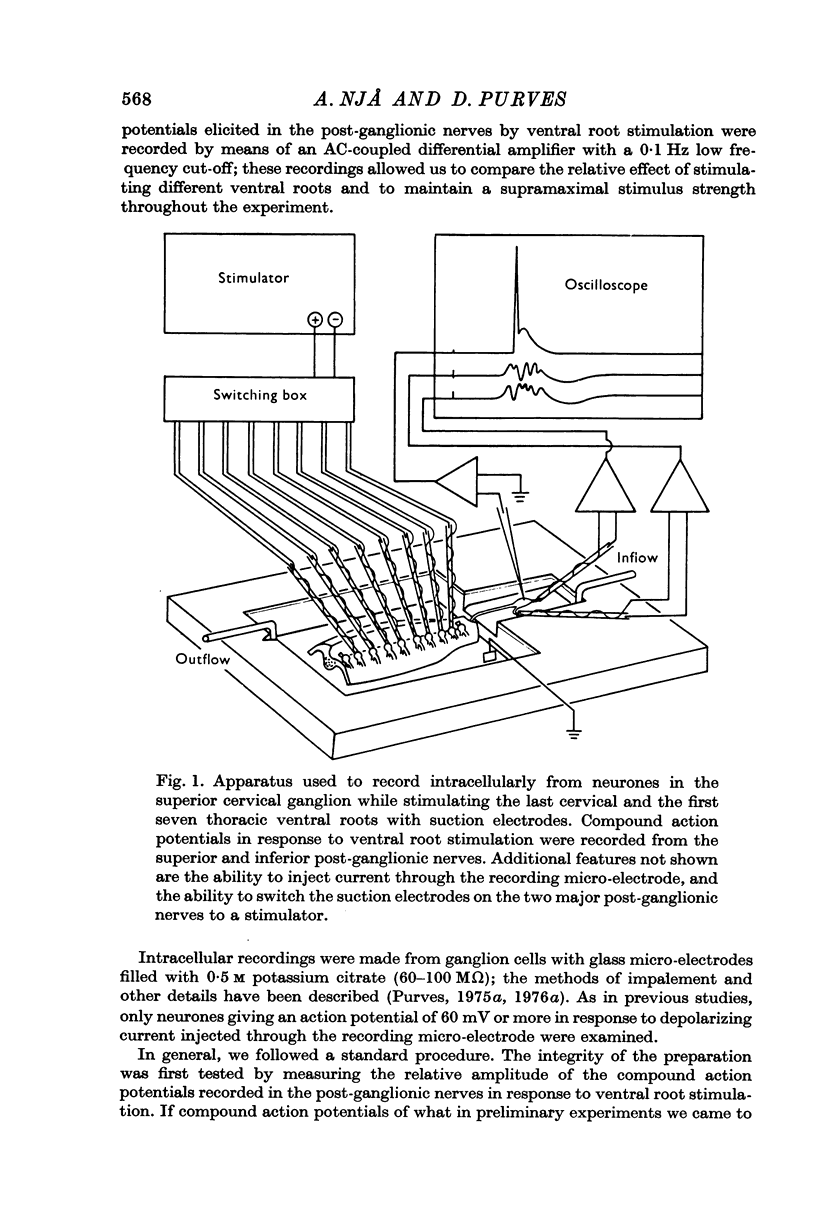

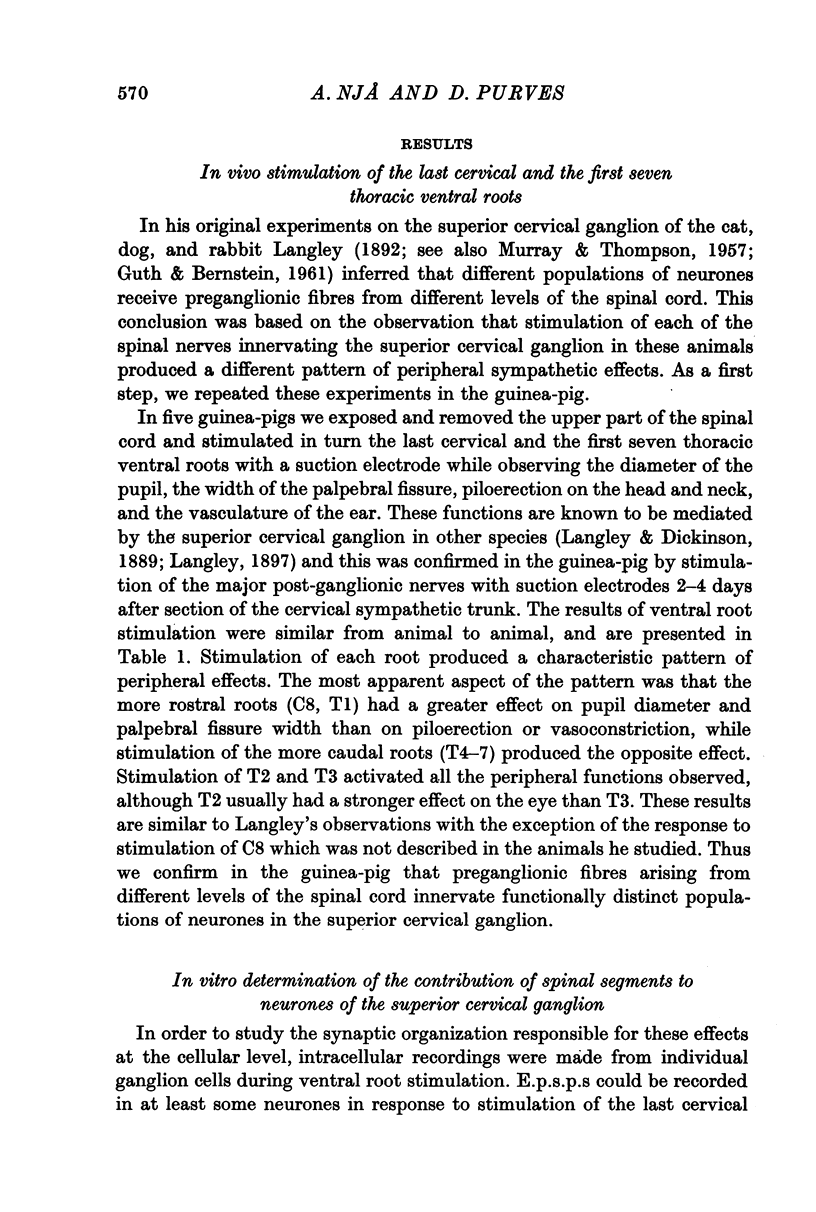





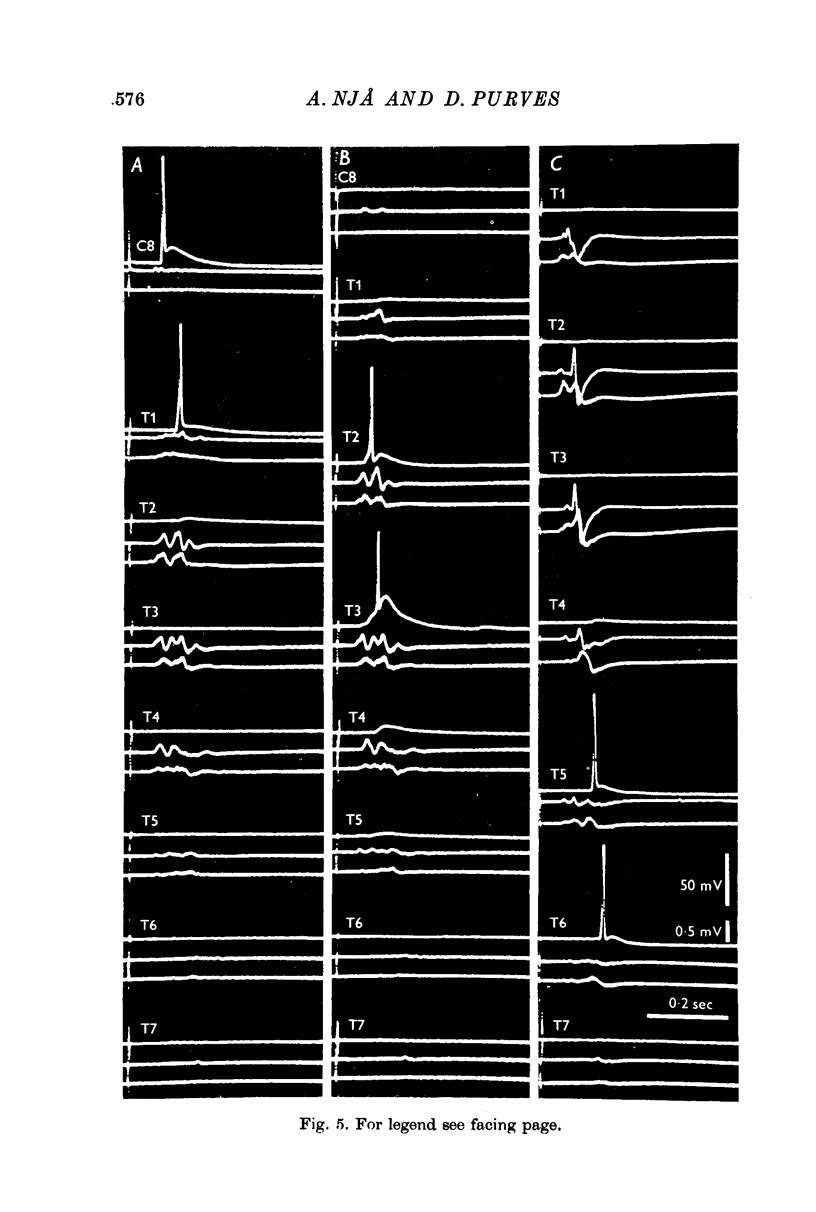
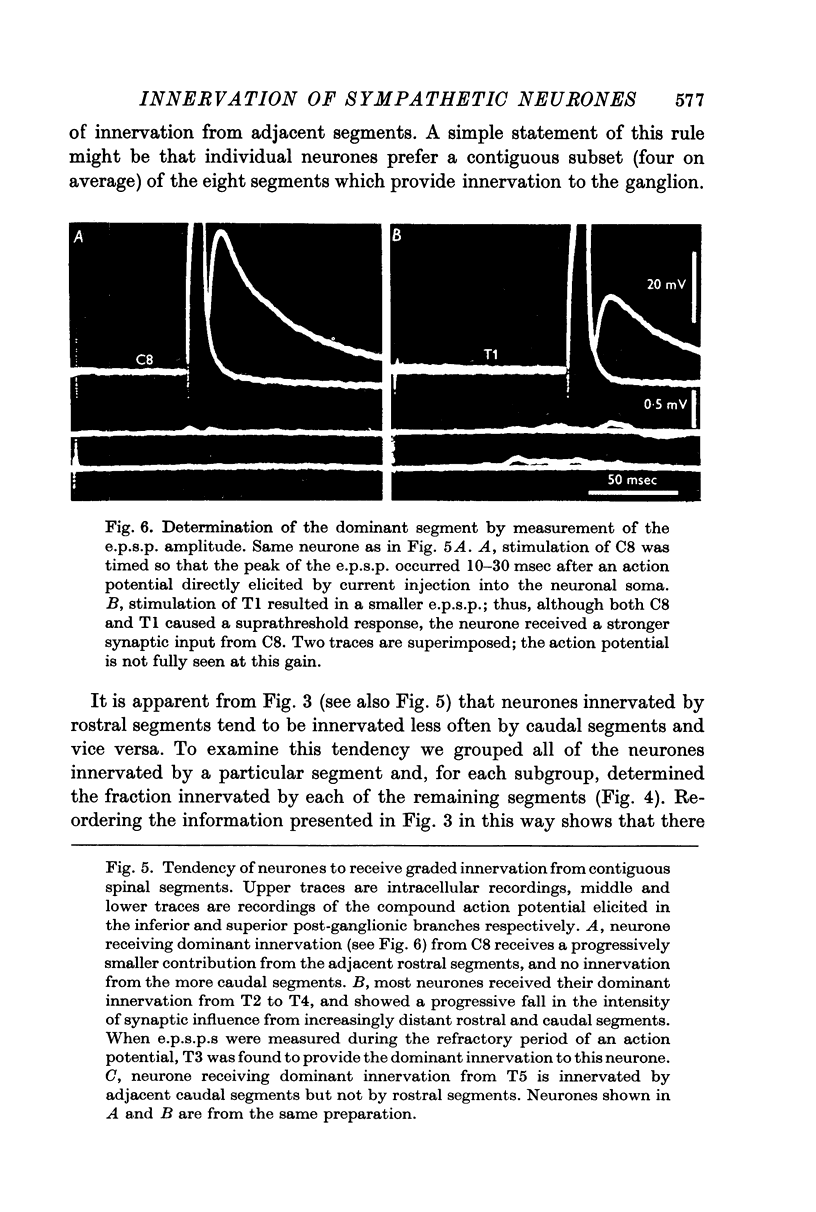
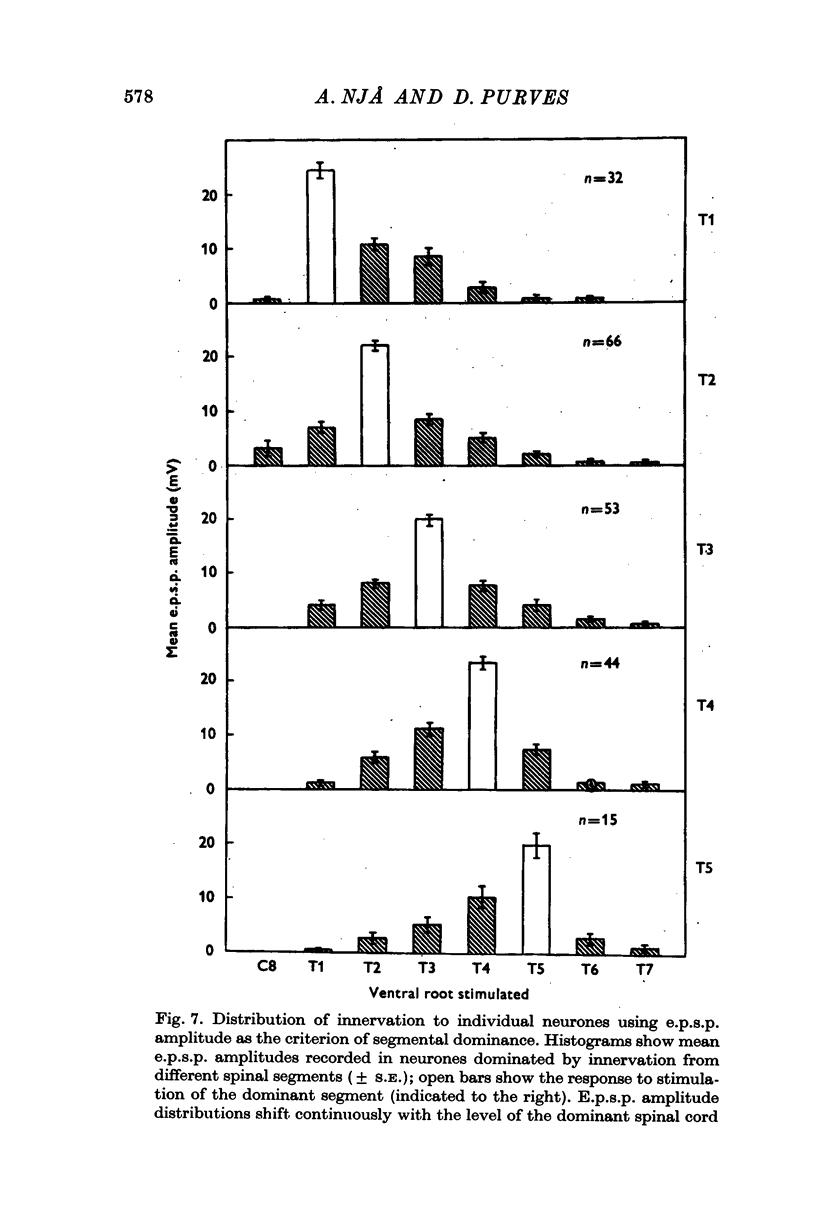

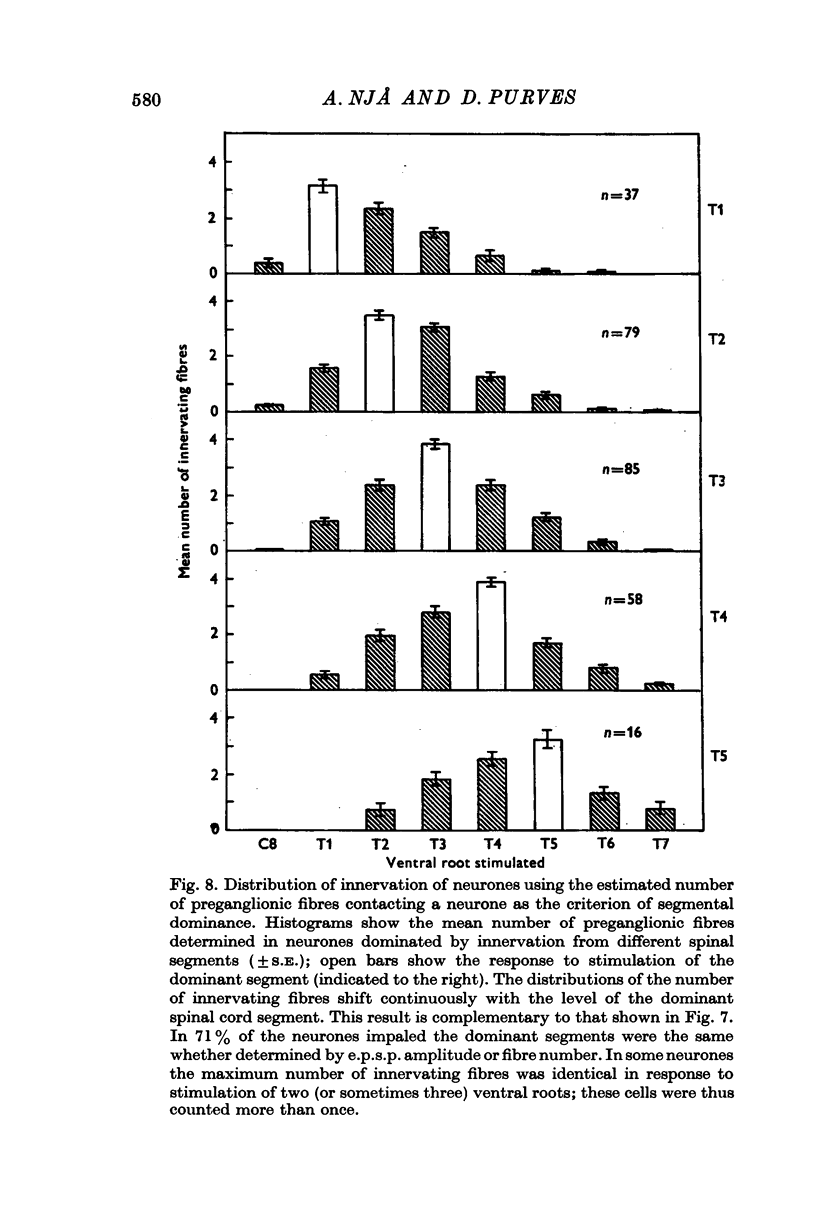
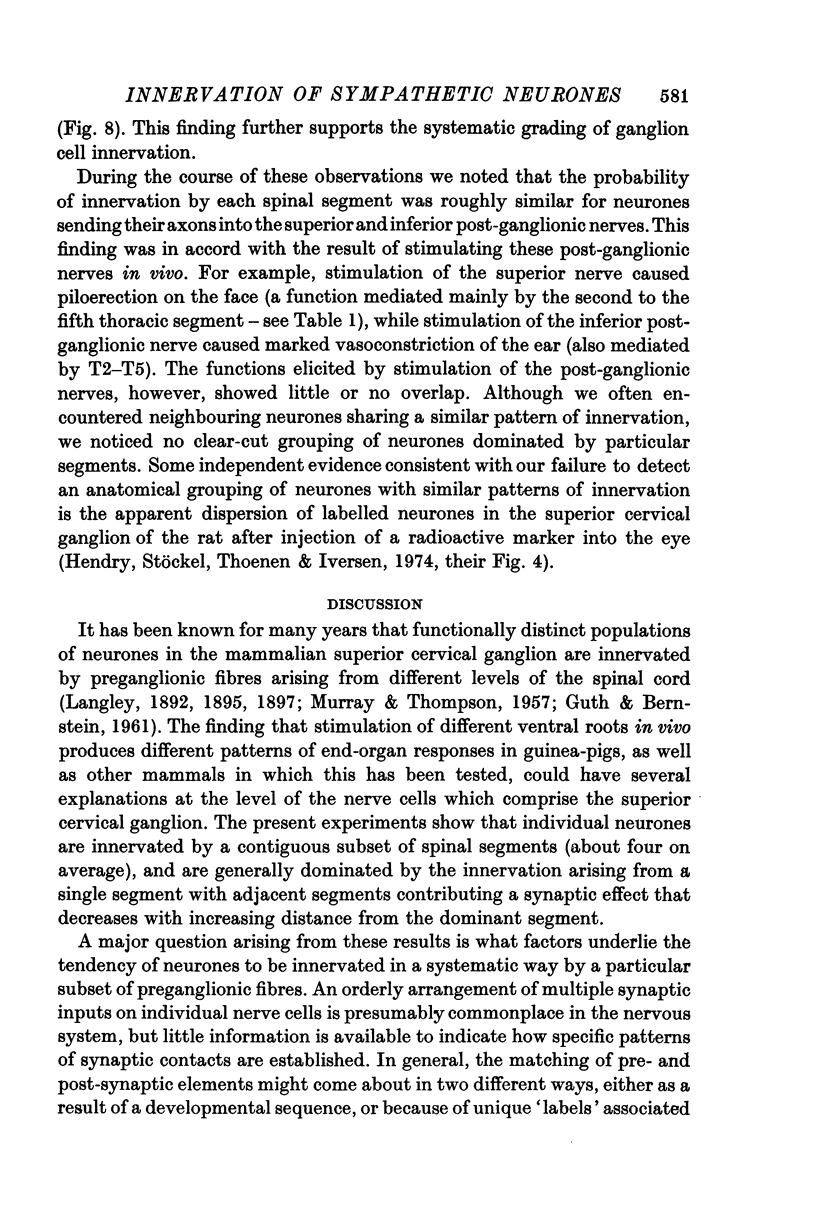
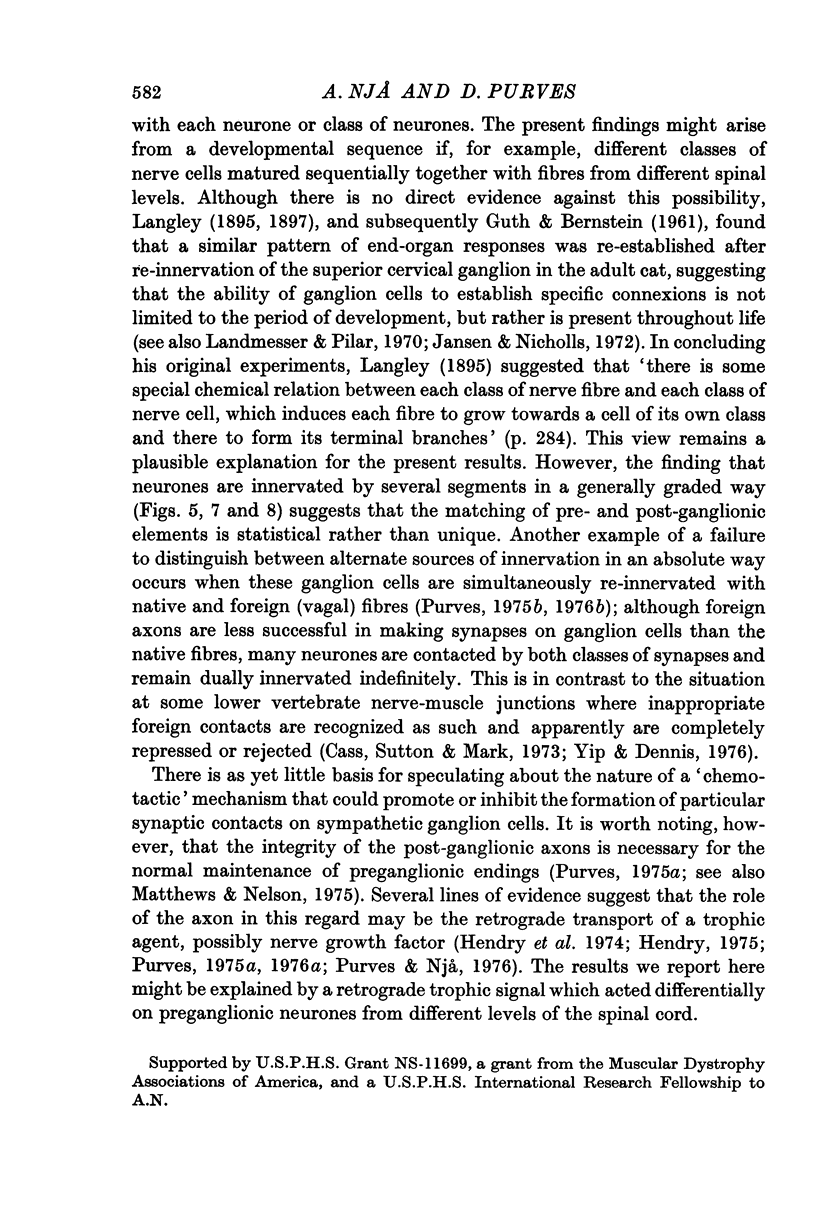

Selected References
These references are in PubMed. This may not be the complete list of references from this article.
- Cass D. T., Sutton T. J., Mark R. F. Competition between nerves for functional connexions with axolotl muscles. Nature. 1973 May 25;243(5404):201–203. doi: 10.1038/243201a0. [DOI] [PubMed] [Google Scholar]
- GUTH L., BERNSTEIN J. J. Selectivity in the re-establishment of synapses in the superior cervical sympathetic ganglion of the cat. Exp Neurol. 1961 Jul;4:59–69. doi: 10.1016/0014-4886(61)90078-4. [DOI] [PubMed] [Google Scholar]
- Hendry I. A., Stöckel K., Thoenen H., Iversen L. L. The retrograde axonal transport of nerve growth factor. Brain Res. 1974 Mar 15;68(1):103–121. doi: 10.1016/0006-8993(74)90536-8. [DOI] [PubMed] [Google Scholar]
- Hendry I. A. The retrograde trans-synaptic control of the development of cholinergic terminals in sympathetic ganglia. Brain Res. 1975 Mar 28;86(3):483–487. doi: 10.1016/0006-8993(75)90900-2. [DOI] [PubMed] [Google Scholar]
- Jansen J. K., Nicholls J. G. Regeneration and changes in synaptic connections between individual nerve cells in the central nervous system of the leech. Proc Natl Acad Sci U S A. 1972 Mar;69(3):636–639. doi: 10.1073/pnas.69.3.636. [DOI] [PMC free article] [PubMed] [Google Scholar]
- LILEY A. W. An investigation of spontaneous activity at the neuromuscular junction of the rat. J Physiol. 1956 Jun 28;132(3):650–666. doi: 10.1113/jphysiol.1956.sp005555. [DOI] [PMC free article] [PubMed] [Google Scholar]
- Landmesser L., Pilar G. Selective reinnervation of two cell populations in the adult pigeon ciliary ganglion. J Physiol. 1970 Nov;211(1):203–216. doi: 10.1113/jphysiol.1970.sp009275. [DOI] [PMC free article] [PubMed] [Google Scholar]
- Langley J. N. Note on Regeneration of Prae-Ganglionic Fibres of the Sympathetic. J Physiol. 1895 Jul 18;18(3):280–284. doi: 10.1113/jphysiol.1895.sp000566. [DOI] [PMC free article] [PubMed] [Google Scholar]
- Langley J. N. On the Regeneration of Pre-Ganglionic and of Post-Ganglionic Visceral Nerve Fibres. J Physiol. 1897 Nov 20;22(3):215–230. doi: 10.1113/jphysiol.1897.sp000688. [DOI] [PMC free article] [PubMed] [Google Scholar]
- MURRAY J. G., THOMPSON J. W. The occurrence and function of collateral sprouting in the sympathetic nervous system of the cat. J Physiol. 1957 Jan 23;135(1):133–162. doi: 10.1113/jphysiol.1957.sp005700. [DOI] [PMC free article] [PubMed] [Google Scholar]
- Matthews M. R., Nelson V. H. Detachment of structurally intact nerve endings from chromatolytic neurones of rat superior cervical ganglion during the depression of synaptic transmission induced by post-ganglionic axotomy. J Physiol. 1975 Feb;245(1):91–135. doi: 10.1113/jphysiol.1975.sp010837. [DOI] [PMC free article] [PubMed] [Google Scholar]
- Purves D. Competitive and non-competitive re-innervation of mammalian sympathetic neurones by native and foreign fibres. J Physiol. 1976 Oct;261(2):453–475. doi: 10.1113/jphysiol.1976.sp011568. [DOI] [PMC free article] [PubMed] [Google Scholar]
- Purves D. Functional and structural changes in mammalian sympathetic neurones following colchicine application to post-ganglionic nerves. J Physiol. 1976 Jul;259(1):159–175. doi: 10.1113/jphysiol.1976.sp011459. [DOI] [PMC free article] [PubMed] [Google Scholar]
- Purves D. Functional and structural changes in mammalian sympathetic neurones following interruption of their axons. J Physiol. 1975 Nov;252(2):429–463. doi: 10.1113/jphysiol.1975.sp011151. [DOI] [PMC free article] [PubMed] [Google Scholar]
- Purves D., Njå A. Effect of nerve growth factor on synaptic depression after axotomy. Nature. 1976 Apr 8;260(5551):535–536. doi: 10.1038/260535a0. [DOI] [PubMed] [Google Scholar]
- Purves D. Persistent innervation of mammalian sympathetic neurones by native and foreign fibres. Nature. 1975 Aug 14;256(5518):589–590. doi: 10.1038/256589a0. [DOI] [PubMed] [Google Scholar]
- Yip J. W., Dennis M. J. Suppression of transmission at foreign synapses in adult newt muscle involves reduction in quantal content. Nature. 1976 Mar 25;260(5549):350–352. doi: 10.1038/260350a0. [DOI] [PubMed] [Google Scholar]


